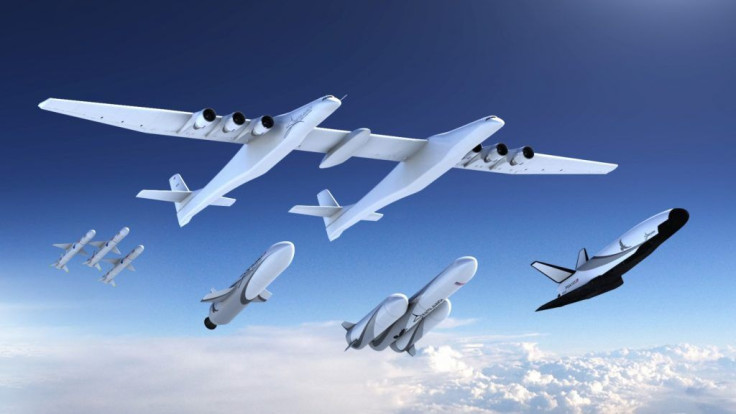Stratolaunch Systems Unveils New Rockets, First Flight Planned For 2020

Unlike the United States-Soviet Union rivalry during the Cold War years, and the very recent announcement by the U.S. to establish a space force (Russia has had one for several years), there is a different kind of space race going on the last few years where much of the real action is. That is the area of private, commercial space companies that are betting on a future where space travel is perhaps as common as taking a flight is today.
While Elon Musk’s SpaceX is usually the most talked about company of its kind, there are several others — a billionaire behind each one, given the high cost of entry — entering the increasingly lucrative industry. Microsoft cofounder Paul Allen’s commercial space venture Stratolaunch Systems announced Monday its launch vehicles — three rockets and the largest airplane ever by wingspan — and proposed first flight for 2020.
“We are excited to share for the first time some details about the development of our own, proprietary Stratolaunch launch vehicles, with which we will offer a flexible launch capability unlike any other. Whatever the payload, whatever the orbit, getting your satellite into space will soon be as easy as booking an airline flight,” Jean Floyd, CEO at Stratolaunch, said in the announcement.
The first of these is the Pegasus rocket, built by Northrop Grumman, which has been flown multiple times. Stratolaunch hopes to launch it in 2020, after testing and integration with its own systems is complete. Pegasus would have a payload capacity of 370 kilograms for a trip up to 400 kilometers above Earth’s surface.
Then, in 2022, Stratolaunch expects the first flight of its “new medium-class air-launch vehicle” which it calls Medium Launch Vehicle. The MLV will come in two variants — single-core and three-core — which would have payload capacities of 3,400 kilograms and 6,000 kilograms respectively. The three-core MLV-Heavy is still in the early stages of development.
All of the company’s rockets are designed not to take from a ground-based launch pad, but instead, to drop from the company’s space plane at high altitudes. Pegasus, for instance, is dropped from its carrier aircraft at about 40,000 feet, and even Richard Branson’s Virgin Galactic is working on a similar launch method. But the air-launch place Stratolaunch is working on (it is still in the design stage) would be the world’s largest airplane by wingspan once it is built.
Compared to the 97.5-meter wingspan of the Hughes H-4 Hercules — the largest wingspan for any aircraft to have made flight — Stratolaunch’s space plane will have a wingspan over 20 percent longer, at 117.3 meters. It will also be “fully reusable” and will initially fly unscrewed for cargo flights, with a later crewed variant being designed too.
It is not known if the company has any potential customers in the pipeline, or how much it would cost to develop its launch vehicles. What is known, however, is that Stratolaunch will compete in a field that already has SpaceX and United Launch Alliance (a Boeing-Lockheed Martin partnership) as big players, while Jeff Bezos’ Blue Origin and Virgin Galactic are coming up fast as well. However, with several hundred satellite launches expected yearly from 2020, there may be enough work for all these companies.
© Copyright IBTimes 2025. All rights reserved.





















